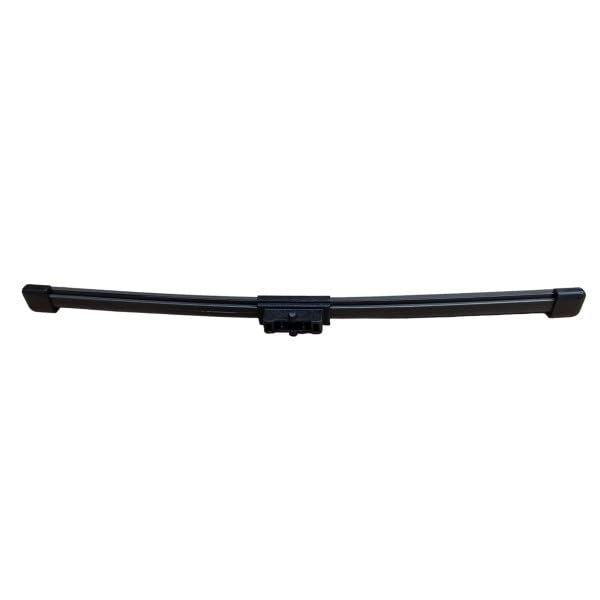In today’s rapidly evolving automotive landscape, buyers are increasingly considering electric vehicles like the Volvo EX30. With its impressive features and eco-friendly design, the EX30 stands out as a compelling option for environmentally conscious consumers. However, many potential buyers aren’t fully aware of the various EV tax credits available to them. Understanding these incentives can significantly impact purchasing decisions, helping to make the transition to electric driving more affordable. This article explores the key aspects of the Volvo EX30 and the tax credits that could benefit its future owners.
- GENUINE OEM: Original Volvo sunshade specifically designed for panoramic roof, ensuring perfect fit and optimal sun protection
- CUSTOM FIT: Precisely engineered to match Volvo panoramic roof dimensions for complete coverage and easy installation
- HEAT REDUCTION: Effectively blocks sunlight and reduces interior temperature for enhanced comfort during warm weather
- CONVENIENCE: Easy to install and remove as needed, stores compactly when not in use
- COMPATIBILITY: Designed for Volvo EX30 vehicles equipped with panoramic roof – EX30 (2025) – EX30 Cross Country (2025)
- GENUINE OEM: Original Volvo wiper blade designed specifically for EX30 rear window, part number 80000063
- VEHICLE SPECIFIC: Direct-fit mounting ensures perfect compatibility with Volvo EX30/EX30 Cross Country back glass
- EASY INSTALLATION: Vehicle-specific design allows for straightforward replacement of your rear wiper blade
- ALL-SEASON PERFORMANCE: Durable rubber construction delivers reliable wiping performance in all weather conditions
- PRECISE FIT: 24-inch blade length provides optimal coverage for your EX30’s rear window, ensuring clear visibility
- GENUINE OEM: Original equipment manufacturer windshield wiper blade kit designed specifically for Volvo vehicles, ensuring perfect fitment and optimal performance
- SUPERIOR DESIGN: Precision-engineered wiper blades provide streak-free cleaning and smooth, quiet operation across the entire windshield
- ALL-WEATHER PERFORMANCE: Durable construction withstands extreme temperatures, rain, snow, and ice to maintain clear visibility in all driving conditions
- EASY INSTALLATION: Direct replacement design allows for quick and simple installation without requiring special tools or expertise
- QUALITY MATERIALS: Constructed with high-grade rubber and sturdy frame components to ensure long-lasting performance and reliable windshield cleaning
- GENUINE OEM: Original equipment manufacturer windshield wiper blade kit designed specifically for Volvo vehicles, ensuring perfect fitment and optimal performance
- SUPERIOR DESIGN: Precision-engineered wiper blades provide streak-free cleaning and smooth, quiet operation across the entire windshield
- ALL-WEATHER PERFORMANCE: Durable construction withstands extreme temperatures, rain, snow, and ice to maintain clear visibility in all driving conditions
- EASY INSTALLATION: Direct replacement design allows for quick and simple installation without requiring special tools or expertise
- QUALITY MATERIALS: Constructed with high-grade rubber and sturdy frame components to ensure long-lasting performance and reliable windshield cleaning
- Dipped beam (low beam)
- Tail light
- Direction indicator (turn signal)
- Brake light (2 types, single pole, and dual pole)
- For: S40/V40 -04, V70, S60, S80, XC90, XC70, C30, S70 -00, C70,
Key Takeaways
The Volvo EX30 provides advanced safety features and eco-friendly materials while contributing to reduced emissions and lower operating costs for owners.
Understanding EV tax credits and eligibility criteria is essential for maximizing savings on the purchase of the Volvo EX30.
Financial incentives can significantly influence consumer decisions towards electric vehicles, with long-term benefits including lower maintenance and fuel costs.
Evaluating driving needs and local charging options is crucial when considering the purchase of the Volvo EX30 to ensure convenience and satisfaction.
Understanding the Volvo EX30 Features
Volvo’s EX30 boasts advanced safety features and a sleek design that appeals to modern drivers. It’s equipped with cutting-edge driver assistance technologies that enhance overall safety on the road. Its intuitive infotainment system allows for seamless connectivity, making every drive more enjoyable. The vehicle’s spacious interior provides comfort for both passengers and cargo, emphasizing practicality without sacrificing style.
Furthermore, it’s engineered with sustainability in mind, utilizing eco-friendly materials throughout its construction. The EX30’s electric powertrain delivers impressive performance, ensuring an exhilarating driving experience. It’s also designed for efficient energy consumption, maximizing range on a single charge. The model includes a suite of customizable options, allowing buyers to tailor their vehicle to their preferences. Overall, the Volvo EX30 represents a blend of innovation and elegance that resonates with today’s environmentally-conscious consumers.
The Benefits of Driving an Electric Vehicle
Driving an electric vehicle offers significant advantages, including reduced emissions and lower fuel costs. Many drivers appreciate the quiet operation and smooth acceleration that electric vehicles provide. Additionally, there’s often less maintenance required, which can lead to further savings over time. With advancements in charging infrastructure, it’s becoming easier to recharge an electric vehicle at home or at public stations. Tax incentives can also make the initial purchase more affordable for buyers. Furthermore, electric vehicles often qualify for various rebates and grants, enhancing their appeal. The positive environmental impact aligns with a growing desire for sustainable living. Drivers also enjoy the convenience of not having to visit gas stations frequently. As the landscape of electric vehicle ownership continues to evolve, understanding the associated tax credits becomes crucial for potential buyers.
Overview of EV Tax Credits
EV tax credits can significantly impact buyers’ decisions when considering the purchase of electric vehicles. These credits often reduce the overall cost of the vehicle, making it more appealing. Many buyers aren’t aware that the amount of the credit can vary based on the vehicle’s make and model. Additionally, some states offer their own incentives, which can further enhance savings. It’s essential for buyers to research both federal and state programs when evaluating their options.
Buyers should also know that tax credits may change over time due to legislative updates. They can depend on the buyer’s tax situation, as some individuals may not benefit fully from non-refundable credits. Buyers often find themselves needing to act quickly, as certain incentives may be limited by the number of vehicles sold. Overall, understanding the nuances of EV tax credits is crucial for anyone considering a purchase like the Volvo EX30.
Eligibility Requirements for Tax Credits
Eligibility requirements for tax credits can vary based on the buyer’s income and vehicle specifications. Each tax credit program has its own set of guidelines that buyers must meet. For instance, some credits may require the vehicle to be manufactured in specific regions. Additionally, the buyer’s adjusted gross income might impact eligibility for certain credits. It’s crucial for buyers to check the current limits set by the IRS or local governing bodies. Many incentives also have a price cap on the vehicle’s MSRP. Buyers need to ensure that the Volvo EX30 meets these price thresholds. Moreover, some credits are available only for new vehicles, while others might extend to used models. Understanding these requirements can help buyers maximize their benefits.
Federal vs. State Incentives
When it comes to electric vehicle incentives, buyers need to understand the distinctions between federal and state offerings. While federal tax credits provide a uniform benefit across the country, state incentives can vary significantly based on local policies. This interplay between federal and state programs creates a complex landscape that buyers must navigate.
Federal Tax Credit Overview
The federal tax credit for electric vehicles offers substantial savings, making it an attractive option for many buyers. It can provide a credit of up to $7,500, depending on the vehicle’s specifications. Eligible buyers must meet certain income requirements to qualify for the full credit amount. Not all electric vehicles are eligible, as the credit depends on the manufacturer’s production cap. As the EV market evolves, buyers should stay informed about any changes to the federal tax credit program.
State Incentive Variations
State incentive variations can lead to significant differences in the overall financial support that buyers receive depending on where they live. In some states, buyers might find generous rebates that can significantly reduce the purchase price of their electric vehicle. Conversely, other locations may offer minimal incentives, leaving buyers with less financial assistance. These disparities can influence a buyer’s decision when choosing to purchase a Volvo EX30 or any electric vehicle. Therefore, understanding local incentives is crucial for maximizing potential savings.
Eligibility Requirements Explained
Understanding the eligibility requirements can significantly impact a buyer’s decision to invest in electric vehicles. Buyers should be aware that federal tax credits depend on the vehicle’s manufacturer and battery capacity. Some state incentives might also have additional criteria, such as income limits or residency requirements. It’s essential for buyers to verify whether their chosen vehicle qualifies for these benefits. By grasping these requirements, buyers can make informed decisions that maximize their financial advantages.
How to Apply for EV Tax Credits
Buyers should be aware that applying for EV tax credits typically involves completing specific forms and providing necessary documentation. They’ll need to gather proof of purchase, such as the sales invoice and any relevant financing agreements. It’s also essential to verify that the vehicle qualifies for the credits based on its specifications and eligibility requirements. Buyers should consult the IRS guidelines to understand the specific credits available for the Volvo EX30.
Once they’ve compiled the necessary documents, they’ll need to fill out the appropriate tax forms, typically Form 8834 for qualified electric vehicles. It’s advisable to keep copies of all documents submitted for their records. After submitting the forms, buyers should monitor the status of their application, as processing times may vary. If they’re unsure about any part of the process, consulting a tax professional can provide valuable guidance. Lastly, they’ll want to be aware of deadlines to ensure they don’t miss out on potential savings.
Impact of Tax Credits on Purchasing Decisions
Tax credits significantly influence buyers’ decisions, making electric vehicles more appealing due to reduced upfront costs. They often lead to increased interest and sales, particularly for models like the Volvo EX30. As potential buyers weigh their options, understanding the financial implications becomes crucial.
Financial Incentives for Buyers
Financial incentives play a vital role in shaping purchasing habits, as they encourage consumers to consider environmentally friendly options. Buyers often find themselves more inclined to choose electric vehicles when tax credits reduce the overall cost. Many consumers are drawn to the Volvo EX30 specifically due to these financial benefits. These incentives can make a significant difference in buyers’ decisions, pushing them toward sustainable choices. Ultimately, the allure of savings can’t be overlooked in the evolving automotive market.
Tax Credit Eligibility Criteria
The eligibility criteria for tax credits can vary based on income levels and vehicle specifications, impacting who can take advantage of these incentives. Buyers must often meet certain income thresholds to qualify for maximum benefits. Additionally, the type of electric vehicle and its battery capacity can determine the level of credit available. Many potential purchasers may find themselves confused by the changing regulations and requirements. Understanding these criteria is essential as it sets the stage for evaluating the long-term cost benefits of owning an electric vehicle.
Long-term Cost Benefits
Long-term cost benefits often outweigh initial expenses, making electric vehicles a smart investment for many drivers. They typically incur lower maintenance costs compared to traditional gasoline vehicles, as they have fewer moving parts. Fuel savings from using electricity instead of gasoline can also add up significantly over time. Moreover, many electric vehicles qualify for various tax incentives that further enhance their financial appeal. With these advantages in mind, it’s essential to address common misconceptions about EV tax credits.
Common Misconceptions About EV Tax Credits
Many people believe that all electric vehicle purchases automatically qualify for tax credits, which isn’t always true. It’s often assumed that buyers can simply purchase any EV and expect a tax break. However, eligibility usually depends on various factors, including the vehicle’s price and the buyer’s income level. Some consumers think that all states offer the same tax credits, but that’s not the case, as incentives can vary significantly by location. Many buyers forget to consider that tax credits may be capped based on the manufacturer’s sales figures. There’s also a misconception that tax credits are immediate savings, when in fact, they typically apply at tax time. Additionally, some believe that leasing an EV disqualifies them from tax credits, but that’s not universally accurate. Many people don’t realize that certain models may not qualify due to new regulations. Understanding these nuances is essential for making informed decisions about the Volvo EX30.
What to Consider When Buying the Volvo EX30
Buyers should evaluate their driving needs and charging options before deciding on the Volvo EX30. It’s crucial for them to consider their daily commute and typical travel distances. They should also take into account the availability of charging stations in their area. The EX30’s range may influence how often they’ll need to charge. Buyers might want to look into home charging installations if they lack convenient public stations.
Additionally, they should examine the vehicle’s features and performance metrics to ensure it meets their expectations. Buyers may also find it beneficial to research any potential tax credits associated with the EX30. They’ll need to ensure they qualify for any incentives before making a purchase. Overall, a thorough assessment will help buyers make an informed decision. Finally, they should consider how the vehicle aligns with their long-term sustainability goals.
Frequently Asked Questions
What is the expected delivery timeline for the volvo ex30 after placing an order?
The expected delivery timeline for the Volvo EX30 after placing an order typically ranges from a few weeks to several months. It largely depends on factors like production schedules, supply chain conditions, and the buyer’s location. Generally, once an order is confirmed, customers can expect updates regarding their vehicle’s status and estimated delivery date. Volvo’s commitment to transparency means that buyers often receive regular communication throughout the process. However, unforeseen delays can occur due to various circumstances, such as high demand or logistical challenges. Overall, it’s advisable for buyers to stay in touch with their dealership for the most accurate and current information regarding their order.
Are there any special financing options available for purchasing the volvo ex30?
When it comes to special financing options for purchasing the Volvo EX30, there are a few possibilities worth considering. Many dealerships offer attractive financing plans that can make owning the vehicle more accessible. Additionally, Volvo itself may provide promotional financing rates, especially for new electric vehicles. It’s important for potential buyers to check with their local dealership for any ongoing offers or incentives. They might also explore third-party financing options, which could provide competitive rates. Overall, it’s advisable for buyers to research and compare different financing solutions to find the best fit for their needs.
How does the volvo ex30 compare to other electric vehicles in its class?
When comparing the Volvo EX30 to other electric vehicles in its class, it’s clear that it stands out in several key areas. Its design combines both sleek aesthetics and practicality, which many buyers appreciate. The EX30 also boasts advanced technology features, making it competitive against other models like the Tesla Model Y or the Ford Mustang Mach-E. In terms of performance, it offers a smooth driving experience with impressive acceleration and handling. Additionally, its range is quite respectable, allowing for longer trips without frequent charging stops. Overall, the Volvo EX30 presents a compelling option for those in the market for an electric vehicle, especially with its focus on safety and sustainability.
Conclusion
In summary, the Volvo EX30 presents a compelling option for those interested in electric vehicle ownership, blending advanced technology with sustainability. Buyers stand to benefit from significant long-term savings on maintenance and fuel costs, alongside the environmental advantages that come with reduced emissions. However, navigating the landscape of EV tax credits can be complex, with eligibility dependent on various factors including income and vehicle specifications. It’s crucial for potential purchasers to stay informed about the latest incentives and understand the application process to maximize their savings. By being proactive and knowledgeable, they can make the most of their investment in an electric vehicle.
If you’re intrigued by fascinating stories behind iconic figures, you won’t want to miss “The Story Behind Harrison Ford’s Scar.” This article delves into the history and significance of a mark that has become synonymous with the legendary actor. Check it out here for an engaging read!
Earnings Disclaimer:
Some links on this page are affiliate links, meaning we may earn a commission if you make a purchase through them—at no extra cost to you. This helps support our independent research and content creation.
Last update on 2025-10-26 / Affiliate links / Images from Amazon Product Advertising API



